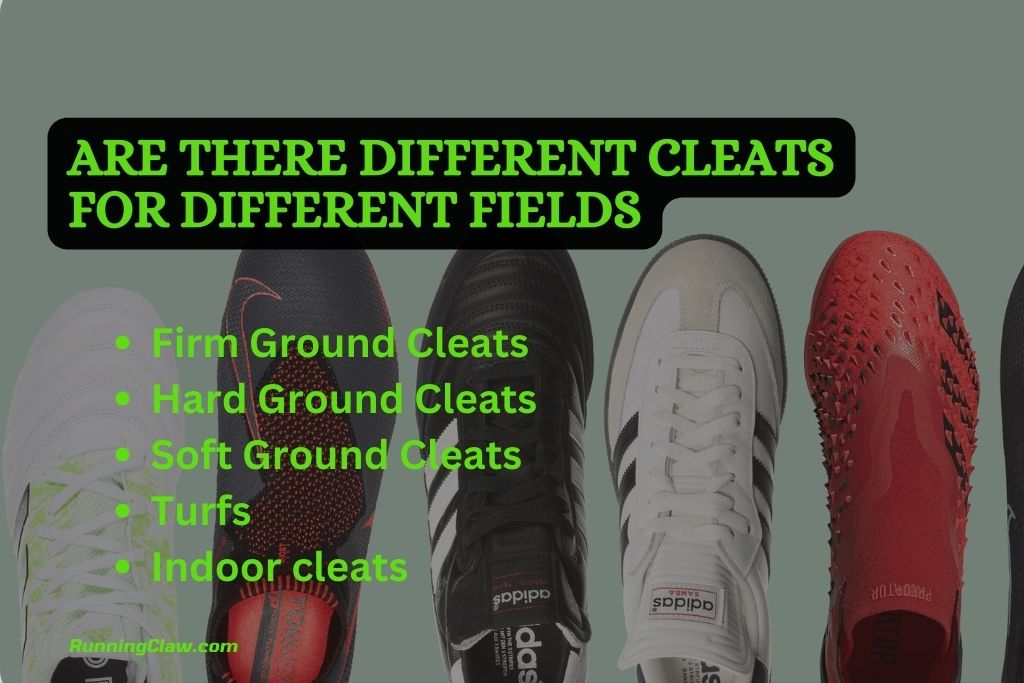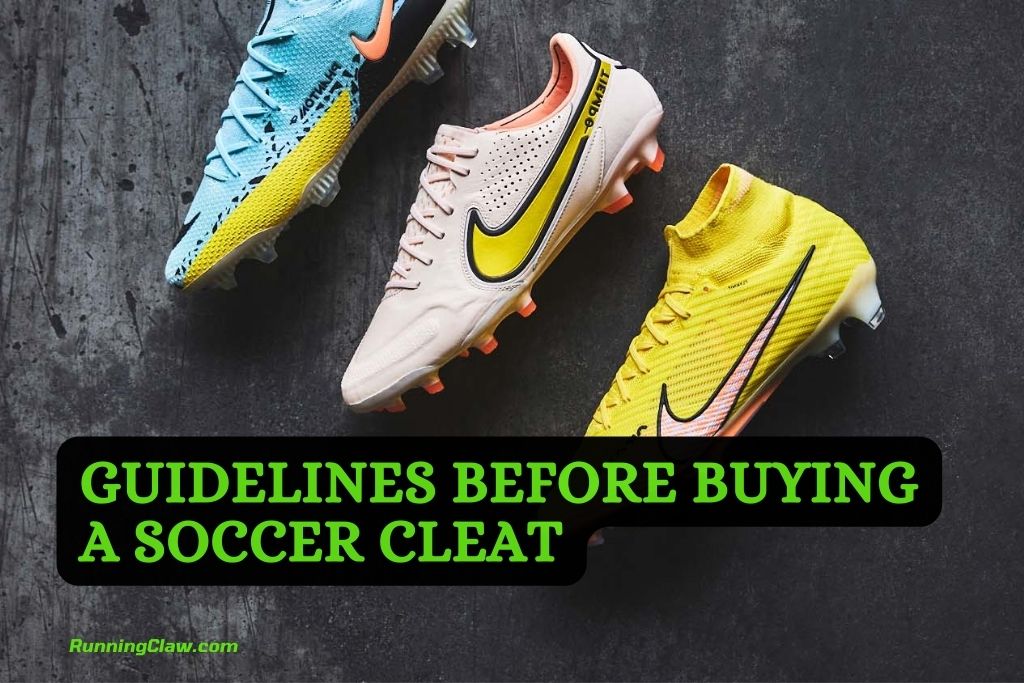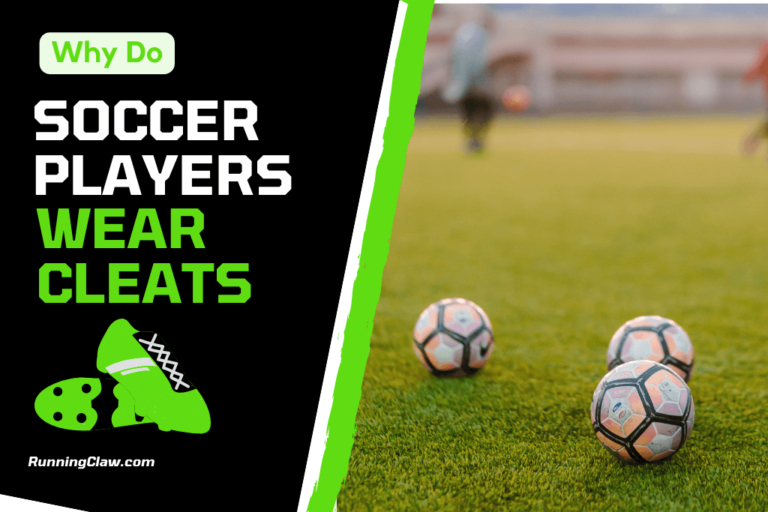Suppose you are new to soccer and need to learn more about all the equipment players use while playing. And want to know what cleats are? And why do soccer players wear cleats? Then, don’t worry. This article is going to be helpful for you.
Does Wearing Cleats Make any Difference in Performance?

Yes, cleats provide traction and adhesion that helps players to be more stable on the field. Cleats are life saviors for players who play on dry, rigid, dusty, or wet fields.
In this article, you will learn about Cleats and also about:
- Different Types of cleats options
- Is it necessary to wear cleats
- Composition of cleats
- Guide before purchasing cleats
- And many more
What are Cleats?
Cleats are protrusions, studs, or spikes at the base of shoes. That provides friction when players push against the field.
Soccer players have to stay on for 90 minutes on their feet. They continuously have to run, kick and move around; they need adhesion to the slippery ground and support to their ankles, provided by these studs.
Your soccer cleats are your most important equipment, so you must find a pair that offers constant traction, stability, and ball feel. Choosing the best cleat for your specific game and the surface you’re playing on is crucial.
Let’s start with the material of the cleats.
- Traditional shoes: Kangaroo leather, often known as K leather, is used to make traditional shoes.
- Professional players prefer natural leather for the ball’s natural feel and comfort. Still, it may absorb water on wet surfaces because it is not waterproof.
- Synthetic Leather is designed to stimulate leather, but often, they offer benefits, as they are waterproof, breathable, and easy to clean.
They provide a different feel of ball contact than K leather. If you are looking for lighter, water-resistant, and durable cleats, you should use synthetic leather cleats.
- Knitted Cleats
They have a highly textured surface for kicking a ball, designed to help increase control.
- Ankle Cleats
You have two further options.
- The first one is the mid-ankle height cleat. If you are a defensive player, you should choose a mid-ankle cleat, which provides added protection, but can limit your range of motion.
- The second one is a low ankle height cleat that is best for forward players, and they want the boost of range of motion offered by low ankle cleats.
Are There Different Cleats For Different Fields?

Yes, according to the field type, the right pair of cleats helps take your game to the next level.
- Firm Ground Cleats
These cleats are most common, as most of them are now designed for use on natural grass, and on artificial grass, they offer extra traction on firm and dry ground.
- Hard Ground Cleats
The cleats work best on rock-hard surfaces or a patchy field with spots of hard dirt, rather than digging into the ground clears sits on the top of the field.
- Soft Ground Cleats
The best option for a muddy field, but check with your league before choosing these because they frequently have metal studs.
- Turfs
Turfs are used on artificial ground and can be used for training.
- Indoor cleats
These are designed without cleats, and they look like sneakers.
Can I wear Football Cleats for Soccer?

Both cleats may look similar to you, but both are different. If you leave your cleats at home, you can wear football cleats.
For better performance, one must wear cleats specific to the type of game.
Soccer cleats don’t have front studs; using studs is prohibited in soccer because it is a contact game, and an opponent may get injured with them, while football cleats have front studs.
If you wear football cleats, your speed will be affected because football cleats are heavier than soccer cleats weighing about 10 oz, while soccer cleats are 6oz.
Soccer cleats don’t have a collar that makes them lighter, while football cleats are stuffed with extra padding making them heavier.
Factors to keep in Mind Before Wearing Cleats

Always know about the weather conditions. There are different cleat options for different weather in the market.
Choose according to the situation if the ground is wet or dry.
I bet you now have enough knowledge of different types of cleats after reading this article.
Some professionals have more than one pair and choose which suits them best according to the conditions, but you can still buy more or spend some good dollars on a pair that will work best for a year even if you wear them regularly.
Guidelines before buying a soccer cleat

- Age is an essential factor if you are buying for your son or daughter who is under growing age, who has the possibility that the size of their feet will increase, or whether he or she is a grown person.
- When wearing a cleat, ensure that the space between the thumb and front of a shoe is no larger than a half inch.
- Avoid too tight cleats because fingers will be congested, and blisters can occur; there should be sufficient space for fingers to move.
- Avoid buying loose cleats.
- Buy tight ones between loose and slightly tight cleats because most cleats expand after wearing them a few times.
- The most important factor is comfort; it does not depend on the price. Some expensive cleats are only sometimes comfortable. Buy cleats that are soft and comfortable.
Different options are available if you want bright colors, white or plain black cleats. Different technologies are being used, and engineers use science to style these shoes.
FAQs:
Why do soccer cleats hurt my feet?
Soccer cleats may cause foot pain if they are overly tight on your feet, poorly designed, made of flimsy materials, you have specific medical issues, or your posture may be to blame. Soccer is a sport that demands a great deal of commitment and drive, both physically and mentally.
Why do soccer cleats have spikes?
The idea behind spikes is the extra traction that proves the performance.
Why do soccer cleats smell like cat urine?
The upper of Nike’s boots are made of Teijin microfiber, which rots when exposed to water. The water in question could be anything, including clean water used for cleaning, sweat, rain, or a combination of the three.
So, it is clear that using this to create a soccer boot was quite clever. It smells suspiciously like cat urine during this decomposing process.
Can I Use Running Shoes for Soccer?
You can wear it, but performance will be at risk.
You May Also Like:


